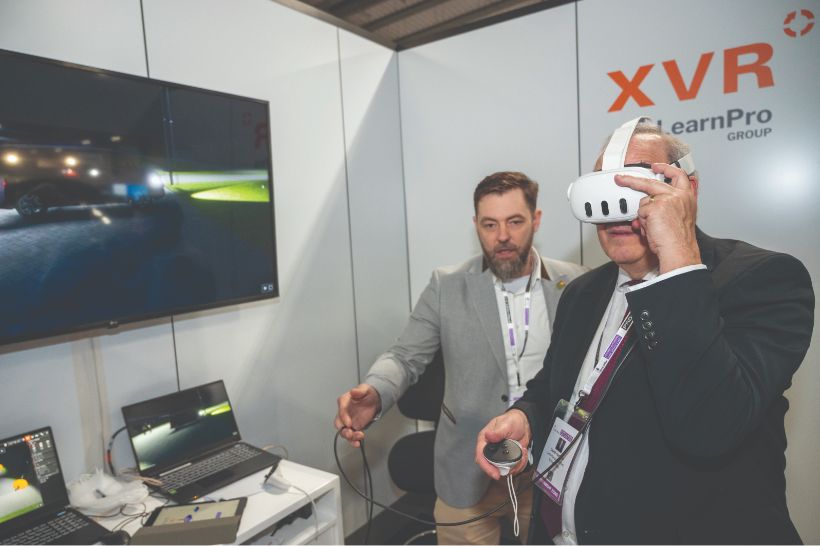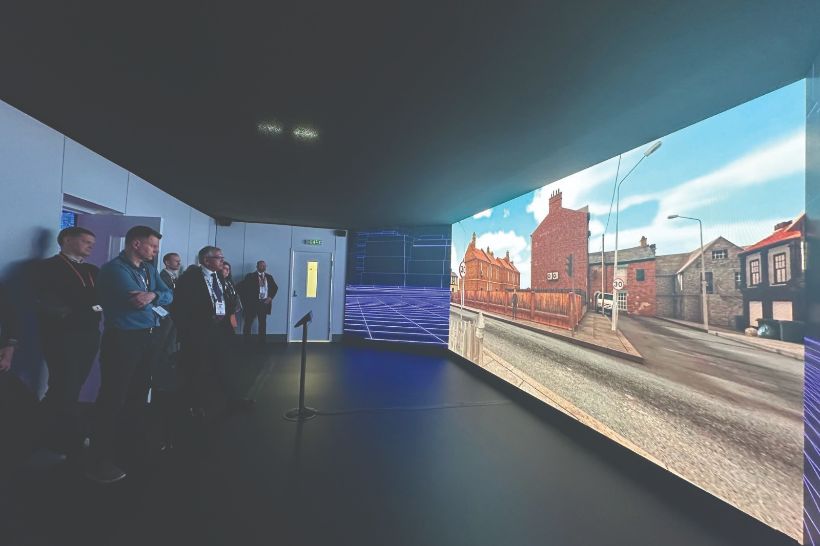Each year, the UK government’s official global security event, Security & Policing, acts as a gateway for innovation, international collaboration and operational excellence. Hosted by the Home Office’s Joint Security and Resilience Centre in partnership with defence and security trade body ADS, this year’s event took place in March and welcomed a record-breaking 9,618 attendees from 75 countries, 405 exhibitors and 36 government departments.
One of the highlights of this three-day showcase at Farnborough International Exhibition and Conference Centre was an immersive experience curated by JSaRC. CityWatch: Streets of Tomorrow offered a compelling vision of how emerging technologies could help create safer, smarter cities.
Designing the streets of tomorrow
The experience was built around a clear mission: to demonstrate how integrated technologies can help prevent and respond to crime in dense, high-pressure environments. In line with the government’s policy priority of achieving safer streets, JSaRC invited industry to propose cutting-edge solutions.
From 38 proposals, nine UK companies were chosen based on export potential, innovation, and how well their tools could integrate into a single, unified scenario. Working alongside immersive experience designers OneTwo, JSaRC and the selected suppliers brought CityWatch to life.
Two rooms, one shared mission
The immersive experience took participants through two rooms, each serving a critical component in the urban security lifecycle. Firstly, the command and control room allowed participants to take on the role of control room supervisors, responding to unfolding threats in real time. With live feeds, data visualisation and situational command tools, the room allowed users to direct resources, analyse risks and coordinate a response to a public safety incident. Featured technologies included crowd tracking sensors, a large-scale urban simulation tool and an AI-driven live threat-detection tool.
 Lord Hanson testing out AVRT’s virtual simulation
Lord Hanson testing out AVRT’s virtual simulation
Secondly, the VR response training room placed participants on the front line. Through full-body immersive simulations, they engaged as tactical responders receiving intelligence from the control centre. The experience showed how training and incident response can be improved using VR environments without putting people at risk. To complement the experience, two standalone VR pods gave quick access to demonstrations for those on tight schedules. A central showcase zone and briefing room enabled suppliers to host deeper discussions and demonstrate their individual products in more detail.
Realism with impact
The immersive scenario was compelling: as a threat unfolded in a busy urban shopping centre, participants had to work collaboratively across rooms to detect, respond to and manage the incident using intelligence feeds, predictive modelling and training interventions.
The experience was not just a display of capability but a live simulation of operational pressure, fast-paced decision making and multi-agency coordination, all brought to life through the integration of real-world technologies that are already deployed across law enforcement and defence.
More than 500 participants experienced this first hand across the three days, including international delegations, law enforcement professionals, senior government officials and frontline practitioners.
Technologies featured in the experience included:
Axon Enterprise – FususOne operational picture
Createc Ltd – Crowd tracking sensors
Electronic Media Services (EMS) – Meshcount movement analytics
Skyral Defence – Large-scale urban simulation
Sopra Steria – STORM command platform
Thales UK – Hypervisor multi-feed video platform
Vizgard – AI-driven live threat detection (FortifAI)
AVRT (Adaptive VR Training) – Immersive networked training simulation
LearnPro Group – Emergency response and crisis simulation via XVR
Phil Douglas, director general, Border Force, said of the experience: “It reminds me of the training the Australian Border Force uses, enabling frontline officers to simulate real-life scenarios and de-escalation techniques without risk of harm.”
Chief constable Gavin Stephens, chair of the National Police Chiefs’ Council, said: “It was excellent to see how the various technologies came together to deliver safer streets for the public.” This theme was echoed by ADS boss Kevin Craven, who said it was “great to see multiple technologies deployed” in the “highly engaging and interactive experience”.
From the supplier side, the experience acted as a launch pad for innovation, providing an opportunity to showcase new products and build relationships. Andy Higgs, sales director at AVRT – which provided training simulation software for the experience, said they received “phenomenal” feedback.
 Participants immersed in the live street scene
Participants immersed in the live street scene
“Collaborating with JSaRC allowed us to engage with new audiences, and the post-demo conversations have been promising for future partnerships,” he said.
Ash Risby, business manager at Vizgard, added: “We had the chance to show off our knife-detection technology as part of a really impressive setup, alongside some of the most innovative companies out there. We also teamed up with another public-safety company to create some video content for the scenario, which helped bring everything to life and show both our technologies in action. Credit to the JSaRC and OneTwo teams – they pulled together a brilliant, high-energy experience that genuinely made you feel like you were in the thick of it, sitting in a control room responding to a live situation.”
Strategic value: prosperity through capability
The immersive experience plays an important role in showcasing how UK-based solutions can support both domestic priorities and international trade objectives. With many featured companies actively exporting, the event aligns closely with the Home Office’s objective to drive innovation while supporting prosperity and strengthening global security partnerships.
It also reinforces the UK’s leadership in blending physical and digital security, bringing together data, AI, simulation and infrastructure to provide solutions to modern challenges.
CityWatch: Streets of Tomorrow didn’t just simulate a vision for the future – it offered a tangible glimpse into how the UK is already shaping it. Through innovation, collaboration and immersive storytelling, the event showed that meaningful partnerships between government and industry are not just possible, but essential, for creating safer streets at home and abroad.
Looking ahead: Security & Policing 2026
The journey doesn’t end here. Security & Policing will return to Farnborough from 10-12 March 2026, and JSaRC is already making plans for a new immersive experience that will integrate export-ready suppliers, real-life scenarios and a clear policy framework. Alongside more than 400 UK exhibitors, ministerial keynotes, and security and policing online platform capabilities, the immersive experience will remain a cornerstone of the UK’s premier security event, where capability meets context, and innovation meets impact.